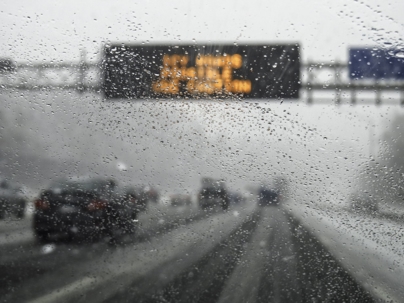When the weather cools off, the risk of car accidents can go up, depending on where you live. Around the east coast especially – like New York, New Jersey, Pennsylvania, Connecticut, and so on – winter weather can mean big problems for motorists. From November to January, it is not unusual to see a day with snow or sleet coating the street. According to information from the U.S. Federal Highway Administration (FHA), about one in four car accidents each year happen on snowy, slushy roads.
Do you live somewhere that has chill weather each winter? Are you worried about driving through it because you know it can be more dangerous than a typical drive? Take a moment now to review some basic inclement weather driving safety tips.
7 tips for driving safely in inclement weather:
- Pack an emergency kit: One of the few things worse than driving through rough weather is getting caught in it. Prepare for this unfortunate but possible event by packing an emergency kit in your car. It should include the basics like jumper cables, flashlight, blanket, nonperishable food, water, and a battery-powered radio. You can find more information about car emergency preparedness by visiting https://www.ready.gov/car.
- Use your GPS: Before you head out during inclement weather, you should plan your route with your GPS or smartphone. Keep it running while you are driving, so it can give you traffic and road updates in real-time. Try to stick to a route with the least traffic because you will inherently be at an increased risk of a car accident when there are more drivers around.
- Slow down: As a general rule, whenever road conditions are less than ideal, you should slow down a bit. Reduce your speed to at least 5 mph under the posted speed limit. If snow, rain, hail, or sleet is falling heavily, then you should slow down at least 10 mph. Never drive faster than is safer for the current conditions, though.
- Double your following distance: Braking distances grow immensely during biting weather because tires can skip along ice and snow. To prevent rear-end collisions whenever you come to a stop in traffic, you should increase your following distance to about 5 or 6 seconds. When the bumper of the car in front of you passes a point on the road, it should take that much time for the front bumper of your car to reach the same point.
- Don’t use your high beams: You might be tempted to switch on your high beams in inclement weather so you can see farther. Don’t make this mistake. High beams are so bright that their light will reflect off the snow, sleet, or fog and blind you. Just use your regular headlights.
- Equip snow chains: Some roads will become so heavy with snow in the winter that tire or snow chains will become necessary. If you live in such an area, then you should keep tire chains in your trunk and know how and when to equip them.
- Correct a skid: You never know when you’re going to hit a particularly bad patch of black ice or snow on the road and lose control of your vehicle. If you start to skid, you should steer calmly and deliberately. Do not apply the brakes but instead take your foot off the accelerator. Next, look where you want your car to go and smoothly adjust your steering to try to point you in that direction. Skid corrections should be slight and controlled. Sudden and large jerks of the steering wheel will probably just worsen the skid.
From our team of car accident attorneys of The Law Offices of Anthony Urban, P.C. in Pennsylvania, we wish you the safest travels this and all winters. If you’re ever in a wreck that another driver caused in rough weather, then let us know by calling (888) 268-0023. We can see if we can help you during a consultation.

